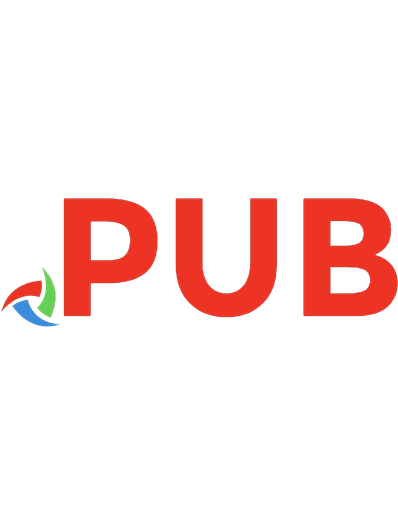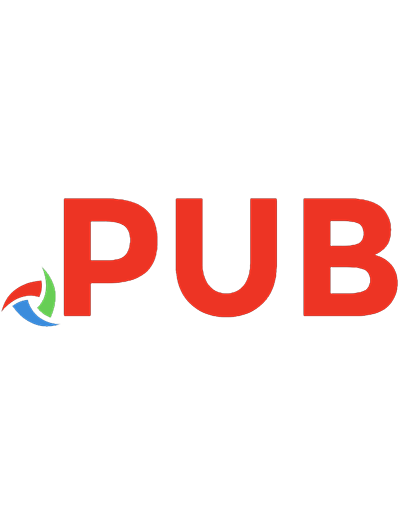The Royal Marsden Manual of Cancer Nursing Procedures 9781119245186, 1119245184
The Royal Marsden is the world’s first hospital dedicated to cancer diagnosis, treatment, research and education – a cen
777 103 101MB
English Pages 456 [459] Year 2018
Table of contents :
The Royal Marsden Manual of Cancer Nursing Procedures
Brief table of contents
Detailed table of contents
Foreword
Acknowledgements
List of contributors
List of abbreviations
Quick reference to the procedure guidelines
How to use your manual
Introduction
1 Diagnostic investigations
Overview
Diagnostic tests and investigations
Tumour markers
Cervical uterine smear
Diagnostic radioisotope procedures (nuclear medicine)
Transrectal ultrasound (TRUS) prostate biopsy
Flexible cystoscopy
Breast diagnostics
Clinical breast examination
Core biopsy
Breast fine-needle aspiration (FNA)
Breast punch biopsy
Nipple discharge smear
Genetic testing
Websites
References
Procedure guidelines for Chapter 1
1.1 Cervical uterine smear using liquid-based cytology
1.2 Unsealed radioactive sources for diagnostic investigations
1.3 Transrectal ultrasound (TRUS) prostate biopsy
1.4 Flexible cystoscopy
1.5 Flexible cystoscopy with stent removal
1.6 Flexible cystoscopy with bladder biopsy
1.7 Flexible cystoscopy with argon plasma coagulation (APC)/cystodiathermy
1.8 Clinical breast examination
1.9 Core breast biopsy
1.10 Breast fine-needle aspiration (FNA)
1.11 Breast punch biopsy
1.12 Nipple discharge smear
2 Haematological procedures
Overview
Bone marrow procedures
Aspiration and trephine biopsy
Bone marrow harvest
Apheresis
Ribavirin administration
Pentamidine isetionate administration
Websites
References
Procedure guidelines for Chapter 2
2.1 Bone marrow aspiration and trephine biopsy
2.2 Bone marrow harvest
2.3 Apheresis
2.4 Ribavirin administration
2.5 Pentamidine isetionate administration
3 Cancer pain assessment and management
Overview
Cancer pain assessment and management
Pain management
Acupuncture
Interventional techniques for managing complex cancer-related pain
Single nerve blocks and injections
Regional peripheral and plexus nerve blocks and infusions
Neuraxial (spinal) blocks: epidural and intrathecal analgesia
Entonox (nitrous oxide) administration
References
Procedure guidelines for Chapter 3
3.1 Acupuncture: preparation and administration
3.2 Epidural/intrathecal sensory blockade: assessment
3.3 Epidural/intrathecal exit site dressing change
3.4 Epidural/intrathecal catheter removal
3.5 Entonox administration
4 Administration of systemic anticancer therapies
Overview
Systemic anticancer treatment
Safe handling of hazardous drugs
Administration of cytotoxic medications by nurses
Intravenous administration of systemic anticancer therapy
Extravasation
Oral administration of systemic anticancer therapy
Intramuscular and subcutaneous administration of cytotoxic drugs
Topical application of cytotoxic drugs
Intrathecal administration of cytotoxic drugs
Intrapleural instillation of cytotoxic drugs
Intravesical instillation of cytotoxic drugs
Intraperitoneal instillation of cytotoxic drugs
Intra-arterial administration of cytotoxic drugs
Side-effects of chemotherapy
Haematological side-effects
Fatigue
Gastrointestinal side-effects
Adverse drug reactions
Neurotoxicity
Mucositis/stomatitis
Nephrotoxicity/haemorrhagic cystitis
Cardiotoxicity
Pulmonary toxicity
Hepatotoxicity
Skin toxicities
Alopecia
Clinical research
References
Procedure guidelines for Chapter 4
4.1 Cytotoxic spillage management
4.2 Cytotoxic therapy: intravenous administration of cytotoxic drugs
4.3 Extravasation management: peripheral cannula
4.4 Extravasation: performing flush-out following an extravasation
4.5 Cytotoxic therapy: education for patients on oral cytotoxic drugs
4.6 Cytotoxic therapy: intramuscular administration of cytotoxic drugs (Z-track)
4.7 Cytotoxic therapy: topical application of cytotoxic drugs
4.8 Cytotoxic therapy: intraventricular administration of cytotoxic drugs via an intraventricular access device (Ommaya reservoir)
4.9 Cytotoxic therapy: intrapleural instillation of cytotoxic drugs
4.10 Cytotoxic therapy: intravesical instillation of cytotoxic drugs
4.11 Cytotoxic therapy: intraperitoneal instillation of cytotoxic drugs
4.12 Intra-arterial administration of cytotoxic drugs
4.13 Scalp cooling
5 Radionuclide therapy
Overview
Radiation
Radiation protection
Unsealed source therapy
Sealed source therapy
Sealed source iodine-125 seeds used in prostate malignancies
Intraoral sealed sources
Websites
References
Procedure guidelines for Chapter 5
5.1 Radiation protection: major spillage of radioactive body fluids through incontinence and/or vomiting
5.2 Radiation protection: contamination of bare hands by radioactive body fluids
5.3 Radiation protection: death of a patient who has received unsealed radioactive source therapy
5.4 Radiation protection: cardiac arrest of a patient who has received unsealed radioactive source therapy
5.5 Radiation protection: evacuation due to fire of patients who have received unsealed radioactive source therapy
5.6 Unsealed source therapy: entering and leaving the room of a patient who has received an unsealed radioactive source
5.7 Unsealed source therapy: iodine-131 (oral capsule/liquid): administration
5.8 Unsealed source therapy: iodine-131 mIBG treatment: patient care
5.9 Sealed source therapy: caesium sources (manual or afterloading): patient care
5.10 Sealed source therapy: low dose-rate Selectron treatment
5.11 Sealed source therapy: Selectron applicator removal
5.12 Sealed source therapy: insertion of sealed radioactive sources into the oral cavity
6 Wound management
Overview
Malignant fungating wounds
Wound assessment
Treatment options
Principles of the management of dressings for a malignant fungating wound
Local wound management
Graft-versus-host disease wounds
Definition
Skin care following radiotherapy
Websites and useful addresses
References
Procedure guidelines for Chapter 6
6.1 Assessing a malignant fungating wound
6.2 Dressing a malignant fungating wound
7 Acute oncology
Overview
Haematological emergencies
Central venous access device complications
Thrombosis (catheter related)
Sepsis
Major artery rupture
Superior vena cava obstruction
Metabolic emergencies
Hypercalcaemia of malignancy
Hypomagnesaemia
Side-effects from chemotherapy agents
Diarrhoea (chemotherapy and radiotherapy induced)
Nausea and vomiting
Neutropenic sepsis
Pneumonitis
Structural
Ascites (malignant)
Bowel obstruction (malignant)
Metastatic spinal cord compression
Pericardial effusion (malignant)
Raised intracranial pressure due to malignant disease
References
Procedure guidelines for Chapter 7
7.1 Carotid artery rupture (CAR)
7.2 Abdominal paracentesis
7.3 Log rolling for suspected/confirmed cervical spinal instability
7.4 Positioning for suspected/confirmed cervical spinal instability: pelvic twist to right
7.5 Log rolling for suspected/confirmed thoracolumbar spinal instability
7.6 Early mobilization of the patient in bed
8 Living with and beyond cancer
Overview
Section 8.1 Introduction
The experience of living with or beyond cancer
Section 8.2 Welfare advice
Overview
Websites
Useful addresses
Section 8.3 Supporting individuals with sexual concerns as a consequence of cancer
Women’s sexual concerns following cancer
Interventions
Men’s sexual concerns following cancer
Interventions
Websites
Section 8.4 Nutritional status
Websites
Section 8.5 Compression therapy in the management of lymphoedema
Lymphoedema
Assessment of the patient with lymphoedema and calculation of limb volume
Compression bandaging
Compression garments
Adjustable wrap compression systems
Websites
Section 8.6 Non-pharmacological management of breathlessness
Non-pharmacological support
Websites
Section 8.7 Physical activity for people with cancer
Websites
Section 8.8 Cancer-related fatigue and sleep
Cancer-related fatigue
Sleep
Section 8.9 Communication for a patient with a laryngectomy
Websites and useful addresses
Section 8.10 Nipple tattooing
References
Procedure guidelines for Chapter 8
8.1 Conducting a holistic needs assessment (HNA)
8.1a Developing and actioning a care plan
8.1b Closure and follow-up
8.2 How a patient should make a claim for Personal Independence Payment
8.3 How a patient should make a claim for Attendance Allowance
8.4 How a patient should make a claim for Carer’s Allowance
8.5 How a patient should make a claim for Employment and Support Allowance
8.6 Assessing a patient’s sexual health concerns
8.7 Measuring the weight, height and waist circumference of the patient
8.8 Compression therapy limb volume calculation: lower limb
8.9 Compression therapy limb volume calculation: upper limb
8.10 Compression bandaging (multilayer short-stretch): bandaging arm and the fingers
8.11 Compression bandaging (multilayer short-stretch): bandaging a leg and the toes
8.12 Elastic compression garments: application to the leg
8.13 Elastic compression garments: application to the arm
8.14 Adjustable wrap compression system: application to the lower leg
8.15 Adjustable wrap compression system: application to the arm
8.16 Breathlessness management: using a handheld fan
8.17 Breathlessness management: essential oil administration via aroma stick inhaler
8.18 Supporting physical activity
8.19 Fatigue management
8.20 Relaxation and anxiety management
8.21 HME placement
8.22 Voice prosthesis: cleaning in situ
8.23 Nipple tattooing
9 End of life care
Overview
Last Offices
Websites and useful addresses
Online resources
References
Procedure guideline for Chapter 9
9.1 Last Offices
Index
EULA

![The Royal Marsden Manual of Clinical Nursing Procedures, Student Edition [10th Edition]
1119532965, 9781119532965, 9781119532989, 9781119532972](https://dokumen.pub/img/200x200/the-royal-marsden-manual-of-clinical-nursing-procedures-student-edition-10th-edition-1119532965-9781119532965-9781119532989-9781119532972.jpg)
![The Royal Marsden Manual of Clinical Nursing Procedures, Student Edition [10 ed.]
1119532965, 9781119532965](https://dokumen.pub/img/200x200/the-royal-marsden-manual-of-clinical-nursing-procedures-student-edition-10nbsped-1119532965-9781119532965.jpg)
![The Royal Marsden Manual of Clinical Nursing Procedures, Student Edition, 10th Edition (Royal Marsden Manual Series) [10 ed.]
1119532965, 9781119532965](https://dokumen.pub/img/200x200/the-royal-marsden-manual-of-clinical-nursing-procedures-student-edition-10th-edition-royal-marsden-manual-series-10nbsped-1119532965-9781119532965.jpg)


![ADVANCED PRACTICE NURSING PROCEDURES. [2 ed.]
9780803698130, 0803698135](https://dokumen.pub/img/200x200/advanced-practice-nursing-procedures-2nbsped-9780803698130-0803698135.jpg)
![Nursing Procedures Made Incredibly Easy! [2 ed.]
9781496300423, 9781496300416](https://dokumen.pub/img/200x200/nursing-procedures-made-incredibly-easy-2nbsped-9781496300423-9781496300416.jpg)
![Cancer Nursing : Care in Context [2 ed.]
9781444309256, 9781405122535](https://dokumen.pub/img/200x200/cancer-nursing-care-in-context-2nbsped-9781444309256-9781405122535.jpg)

